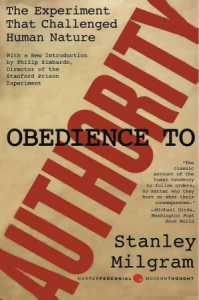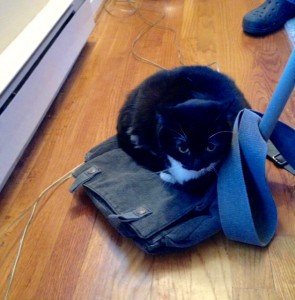

![[Source]](http://vivianlawry.com/wordpress/wp-content/uploads/2018/02/162203966-300x215.jpg)








![[Source]](http://vivianlawry.com/wordpress/wp-content/uploads/2018/02/162203966-300x215.jpg)







I’m honored to be interviewed on Fiona Quinn’s Thrill Writing, a blog helping thriller writers write it right.
We talk about why a character might act “out of character,” group mentality, behavior matching, why people might be more passive in groups or more likely to riot, and more.
In this article, we’re talking about what happens to a character when they get into a group where a character might act “out of character”, which is a fun way to develop the plot.
Can you first give us a working definition for “group”
Vivian – We usually think three or more, but some “group” effects are present even with only two. Also, the “group” needn’t be physically present to exert influence.
Fiona – Can you explain that last sentence?
Vivian – Some group memberships are literal memberships–for example, a church congregation, sorority, bridge club, etc. such groups are often in our thoughts, and serve as a reference or standard for behavior even when the member is alone.
Fiona – Does “group mentality” work both ways? For example, people in a riot become riotous, but people in a disaster, where they see all hands on deck, become heroes?
People in a religious forum feel more religious. . .sort of like a magnifier?
Vivian – Absolutely. I just mentioned formal groups–which are the ones having the strongest influence at a distance– but crowds, mobs, any physical gathering of people, shapes our behavior to act or remain passive.
Fiona – Can you give us a short tutorial on what we need to know about group dynamics to help write our characters right?
Vivian – Well, there is a phenomenon known as behavior matching, a tendency to do what others around us are doing. This is reflected in everything from eating to body language. Even a person who has eaten his or her fill will eat more if someone else comes in and starts eating. If others are slouching, your character isn’t likely to remain formal.
Fiona – Yes, it’s hard to pass up a piece of chocolate cake when everyone else is moaning about how delicious it tastes.
Just sayin’
Vivian – A related phenomenon–I suppose it could be a subset of behavior matching– has the label diffusion of responsibility. This is the tendency for people to stand passively by when others are present. There was a classic case, decades ago, in which a NYC woman named Kitty Genovese was murdered in the courtyard of her apartment. The murder took approximately half an hour, and dozens of her neighbors watched from their windows. No one came to help or even called the police. The more people who could help, the less likely anyone will take responsibility for doing so.
And then there is group disinhibition. This is sort of the opposite. It is that people are more likely to take risks, break the law, be violent when others are doing so. Think looting, or harassing a homeless person. Disinhibition is even more powerful when alcohol is involved. I recently posted a blog on alcohol for writers that goes into that a bit.
But the bottom line is that we behave differently with others present than when alone.
Thank you, Fiona!

According to Gallup polls, over half of Americans say they are at least a little superstitious. Consider the value of superstition for your character(s).

People who are truly not superstitious are nevertheless well aware of what’s associated with Friday the 13th, black cats, broken mirrors, four-leaf clovers, etc. Such people might well make a wish with fingers crossed, or when tossing a coin into a fountain or other water, when blowing out birthday candles, or kissing a horseshoe. If you don’t consider yourself superstitious, you may engage in superstitious thinking or behavior nevertheless, without paying attention—an habitual or non-conscious action. For me, that’s knocking on wood.

This collection by Claudia De Lys has an excellent two-page description of this and other wood superstitions, ranging from the balsam needle pillows to wooden rosary beads, traced back to the spirits believed to live in trees that bring on the seasonal changes (life, death, and resurrection) or maintain the evergreen state (immortality). A tree or wood was touched when asking favors and again in appreciation of good fortune received.

Diana Gabaldon’s work is an excellent example of effectively using her characters’ beliefs, superstitions, and ritual acts—everything from beliefs about witches and fairies to making the sign of the cross—to illuminate both the characters and the historical context.
Stuart Vyse, Ph.D., author of Believing in Magic: The Psychology of Superstition, is an authority on magical thinking. He differentiates superstition from obsessive-compulsive behavior or other mental disorders and religious ritual, and discusses the functions each serves. I’ll stick with superstition for the sake of (relative) brevity.
Anything as nearly universal across time and cultures as superstition must serve some beneficial function! In a 2010 paper by Damisch, Stroberock, and Mussweiler, “Keep Your Fingers Crossed! How Superstition Improves Performance,” the researchers argue that superstitions give people a sense of control in chaotic situations. The major outcome of this research was that people who were allowed to solve problems with their lucky charms at hand performed better than when those charms were absent.
But the important point is that it is performance based. So wearing mismatched socks when playing baseball or tennis—or mah jongg jewelry when deep into that game—might improve performance.
But lucky charms have no impact on outcome when the results are due to chance. So skip the lucky dice—unless you just like the look.
These researchers point out the ways in which this phenomenon may be wide-spread and important, for example in alcoholism. Many if not most members of AA attribute their abstinence to the higher power in their lives giving them strength. If they believe, they are more likely to stay sober.

Some people are more superstitious than others—athletes and actors are notoriously so—and superstitions run in families. One example is a Virginia friend who says, “Rabbit, rabbit, rabbit,” first thing in the morning on the first day of each month to ensure a good month. Her daughter in Texas does the same thing. And now they text each other to see who says it first!
And, incidentally, women are more superstitious than men. Vyse relates this to locus of control. People who have an internal locus of control (I am master of my fate) are less superstitious than those with an external locus of control (life happens to me). Compared to men, women still feel that they have less control in their own lives. So maybe they wear special earrings for dominoes, euchre, and bridge for a reason!
Vyse also makes a connection between performance improvements and effort. He says that lucky charms don’t significantly reduce anxiety, but they do increase persistence. So maybe that’s what’s going on with a friend who happens to be a lapsed Catholic. When she loses something, she still says what she calls “the kid’s version of the prayer to St. Anthony”: Tony, Tony, come around. Something’s lost and must be found. She swears it works.
Truly magical thinking is taking an action that has no logical way to affect the outcome but may bring comfort anyway. A third friend who grew up in a Navy family won’t watch people leave because that means they won’t come back. She attributes this to her life on base, when families would see their husbands/fathers off at the dock but turn away as soon as the ship was underway.
When pressed, many non-superstitious people will admit that they prefer not to walk under ladders, step on graves, or open umbrellas indoors. They prefer to leave a building by the same door through which they entered, and they want to round an object in the path on the same side as their companion. Do you always include money when you give a purse or wallet? Does the recipient of a gift knife have to “pay” the giver at least a penny? Superstitions are everywhere, everyday, not just on Friday the 13th!
Give your characters superstitions and/or rituals. It can add interest, tell something about the person’s ethnic or family background, and illustrate her/his anxieties and feelings of control.
Here are a few of my favorite writing prompts.
Julia Child, chicken, and language…
In 1992, the Common Council of Syracuse, NY, passed a decree that any more snow before Christmas Eve was illegal. Just two days later, they had more snow. But what’s the story there?
Think carefully before you throw one or more animals into your story. Consider the role of the animal(s), and the fit between your character and the fictional animal(s). And then have fun with it!
Writers Need Toxic Relationships
Eight types of unattuned and unloving mothers:
The good news for writers is that these toxic relationships needn’t be limited to toxic mothers and vulnerable daughters. (You may recognize here an echo of what I said about Deborah Tannen’s analysis of mother-daughter communication patterns: what one says isn’t necessarily what the other hears could apply to virtually any long-germ relationship.) In this instance, consider toxic relationships between husbands and wives. Consider boss and subordinate. Consider role reversal in that it’s the daughter who is toxic.
Three cheers for toxic (literary) relationships!
Don’t forget my signing later today at Barnes and Noble. Details are below.
Libbie Place Shopping Center
5501 West Broad Street
Richmond, VA 23230
12:00 – 2:00pm
Copies of my Chesapeake Bay Mystery series will be available.
Yes, there are offbeat animal detectives. In Three Bags Full: a sheep detective story by Leonie Swann, the shepherd is murdered and the sheep, led by the ewe Miss Marple, set out to discover the murderer. In Anonymous Rex, by Eric Garcia, dinosaurs continue to live among us, disguised in latex masks and tail girdles. Otherwise, Rubio is the classic hard-boiled detective. Freddy the Detective by Walter R. Brooks features a pig detective. Bernd Heinrich writes ravens, by far the smartest of birds. And Elmore Leonard, in his first children’s novel, created Antwan, a hip-talking coyote living in the Hollywood Hills, for A Coyote’s in the House.
Dogs are poorly represented in the mystery genre. In Hank the Cowdog, Hank is the inept “Head of Security” for a ranch, and setting out to find who’s stealing the corn, he sets clever traps that consistently trap him. Play Dead by Leslie O’Kane features a dog behaviorist/therapist and an “ugly collie” rescue dog.
Cats, on the other hand, are everywhere. There are whole series featuring cats. Think the Mrs. Murphy series by Rita Mae Brown and Sneaky Pie Brown, or The Cat Who… series by Lilian Jackson Braun. Perhaps less well known is the Joe Grey Cat Mystery series by Shirley Rousseau Murphy, in which Joe is a cat from the Catswold that can speak and understand English, among other talents. And then there is the series in which the point of view shifts between a big black cat named Midnight Louie and his person, Temple Barr.
Why cats? Well, for one thing, they are notoriously independent and sneaky. They were domesticated tens of thousands of years after dogs—or maybe not yet, even. Cats are confounding creatures, for centuries associated with death cults, witches, Satan, black magic, and so forth. So creating fictional cats with paranormal abilities—talking, shape shifting, psychic reasoning or implausible acts of physical derring-do, invisibility, tele-transportation—is much less jarring than similar traits in a dog—or sheep, goat, pig. A monkey, now . . .

So, if you want to sample some cat detective fiction, apart from what’s mentioned above, consider the following: A Cat Tells Two Tales and/or The Cat, The Vagabond, and The Victim by Lydia Adamson; The Cat, The Mill, and The Murder by Leann Sweeney; All Dressed Up and No Place to Haunt by Rose Pressey; Cat In a White Tie and Tails by Carole Nelson Douglas; Tailing a Tabby by Laurie Cass; Cat Nap and/or Last Licks by Claire Donally; No Cooperation From The Cat by Marian Babson; Literally Murder by Ali Brandon;The Cat, The Devil, The Last Escape by Shirley R. & Pat J. J Murphy. And I’m sure there are others out there.
By the way, as far as I know, cat detective stories are all written by women and feature women partners for the cats. Surely there are deep historical associations between women and cats.
If you are thinking about adding an animal detective to your mystery, consider the competition—and riding the wave of popularity!